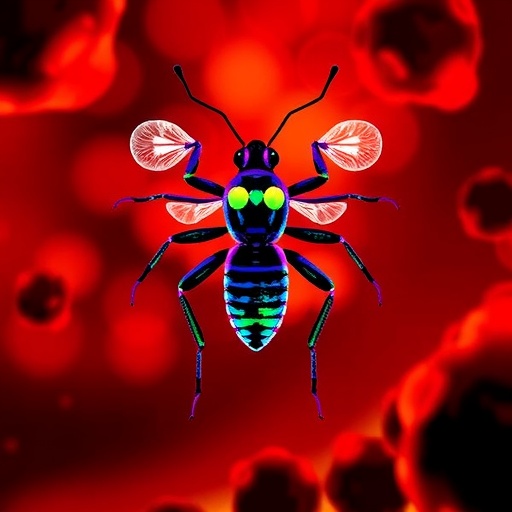In a groundbreaking advancement at the intersection of infectious disease diagnosis and biomedical engineering, researchers have introduced a hybrid analytical method that integrates cardiac biomarkers with echocardiography (ECHO) videos to detect Trypanosoma cruzi infection—the parasitic agent responsible for Chagas disease. This disease, historically endemic to Latin America, has surged onto the global stage, propelled by migration and changing climate conditions, making early-stage detection more vital than ever to prevent debilitating chronic cardiac complications.
The novel approach hinges on the innovative fusion of machine learning (ML) and deep learning (DL) techniques, leveraging multimodal cardiac function data to identify infection with unprecedented accuracy. Recognizing that traditional diagnostic approaches often fall short in sensitivity during early infection phases, the research team sought to exploit the wealth of information encoded in both cardiac biomarkers—quantitative biochemical indicators in blood—and dynamic echocardiographic imaging, which visualizes heart structure and function.
To develop and validate this method, the study utilized an experimental cohort of 96 genetically uniform ICR mice to simulate human cardiac pathology induced by T. cruzi infection. This animal model provided a controlled environment to longitudinally monitor changes in cardiac biomarkers and echocardiography video data, forming a robust dataset for training and testing their computational algorithms.
The machine learning framework began with the analysis of 64 distinct cardiac biomarkers, employing ensemble feature selection (EFS) to distill the dataset into the 17 most informative markers. Subsequently, the team applied multiple kernel learning (MKL) techniques—known for their ability to manage heterogeneous data types—initially in an unweighted form, achieving commendable classification metrics: 73% accuracy (ACC), 84% area under the ROC curve (AUC), and a 69% F1 score. These metrics were further enhanced through the adoption of a weighted MKL approach, which fine-tunes kernel contributions based on feature relevance, ultimately reaching an impressive 80% across ACC, AUC, and F1 on independent test data.
Parallel to the biomarker analysis, two cutting-edge deep learning architectures were deployed to process echocardiography video sequences. These models, designed to capture spatiotemporal patterns within cardiac motion, delivered moderate classification performance—approximately 65% accuracy, 60% AUC, and 58% F1—reflecting the complex challenges inherent in video-based diagnosis. However, the integration of these DL-generated insights with ML-derived biomarker analyses represented a significant leap.
The study’s pièce de résistance was a hybrid late multimodal fusion strategy that synchronized the strengths of both ML and DL modalities. By combining the predictive power of biomarker analysis and the nuanced image-based assessment of cardiac function, this fusion model achieved an overall performance of 84% AUC and 80% in both accuracy and F1 score. This synergy not only underscores the complementary nature of biochemical and imaging data but also heralds a new era in automated, precise diagnostics for infectious cardiomyopathies.
Crucially, this fusion approach reflects a deeper understanding of the pathophysiological complexities of Chagas disease, which unfolds over prolonged periods with insidious cardiac remodeling and variable biomarker expression. By harnessing both static biochemical snapshots and dynamic video information, the method surmounts limitations of single-modality diagnostic strategies.
Methodologically, the study’s innovative use of weighted MKL for biomarker data affords interpretability, allowing clinicians and researchers to discern which markers carry the most diagnostic weight. Meanwhile, the deep learning architectures, benefiting from advances in computer vision and temporal pattern recognition, exemplify how AI can decipher subtle, disease-specific cardiac motion abnormalities invisible to the human eye.
From a public health perspective, this hybrid diagnostic tool offers substantial promise for deployment in endemic and non-endemic regions alike, where early detection of T. cruzi infection remains elusive but essential. The automated nature of the model paves the way for scalable screening frameworks, potentially integrated into routine cardiac evaluations for at-risk populations.
Beyond its immediate clinical implications, this study exemplifies the trend of multimodal data fusion in biomedical research, demonstrating how combining diverse data streams via advanced AI can yield superior diagnostic accuracy. The framework may inspire similar approaches for other complex diseases where multifaceted biomarker and imaging data converge.
In conclusion, the integration of cardiac biomarkers and echocardiography videos through a hybrid machine and deep learning technique represents a quantum leap in the fight against Chagas disease. By enabling accurate, early-stage detection of T. cruzi infection in an automated, scalable manner, this research sets the stage for improved patient outcomes and a transformative shift in infectious disease diagnostics.
Subject of Research: Trypanosoma cruzi infection classification using cardiac biomarkers and echocardiography videos through hybrid machine learning and deep learning methods.
Article Title: A hybrid method for fusion cardiac biomarkers and echocardiography videos in the experimental classification of Trypanosoma cruzi infection
Article References:
Vazquez, B., Perez-Gonzalez, J. & Hevia-Montiel, N. A hybrid method for fusion cardiac biomarkers and echocardiography videos in the experimental classification of Trypanosoma cruzi infection. BioMed Eng OnLine 24, 110 (2025). https://doi.org/10.1186/s12938-025-01446-w
Image Credits: AI Generated
DOI: https://doi.org/10.1186/s12938-025-01446-w
Tags: accuracy in disease detection methodscardiac biomarkers in infectious diseasesChagas disease early detectionchronic cardiac complications in Chagasdeep learning in biomedical engineeringechocardiography and machine learningexperimental animal models in researchglobal impact of Chagas disease.hybrid biomarkers for Chagas infectioninnovative diagnostic methods for Chagasmultimodal data for disease classificationTrypanosoma cruzi diagnosis





